Love him or hate him, one thing’s for sure: James Harden has his own unique style, both on the court and off. Looking to capitalize on its investment, adidas has gotten a little, well, different with his first two shoes. The Harden Vol 3 has gone back to a more traditional look so does that mean performance took a vacation? Let’s go…
The Harden Vol 1 and 2 both featured anything but traditional traction patterns; the Vol 1 was based on pressure points and Harden’s start-and-stop style, while the Vol.2 looked like a sponge but worked (in certain colorways). The Harden 3 discovered herringbone and it is great.
Front to back, side to side (word to UGK), the Harden Vol 3 voyager offers complete coverage in a tight, tough pattern that gripped all three floors I played on. This model (the ‘Voyager’ colorway) features a translucent rubber that doesn’t grab dust as bad as past shoes with clear soles, but I did need to wipe frequently on the dirty court. On the newly refinished rec court I play league at on Mondays, I was completely glued to the floor with almost too much grip. I know, that’s a serious problem right?
I could really feel the difference between the Harden Vol 3 and the Vol 2 on defense. The Vol 2 pattern and rubber offered a smoother, softer stop that eased into the grip (if that makes sense). However, the Harden Vol 3 is a serious stop RIGHT NOW stop and as someone who still tries to play hard D (yeah, I know…) I appreciated the improvements.
Outdoors? C’mon, you already know that answer. Shallow pattern, translucent rubber? Not a chance I see these lasting outdoors, at least in this colorway.
Less Boost must mean worse cushioning — those are the laws of sneaker physics right? — except when it doesn’t, like on the Harden Vol 3. What helps is less caging of the forefoot.
By only caging about a three inch strip (in my size 10.5) of the forefoot the stability is still present but the Boost is allowed to compress more across the whole forefoot. That gives the shoe great impact protection but also incorporates some great court feel.
The Vol 1 went with court feel and it excelled. The Vol 2 went the max cushioning route and lost some court feel, although it wasn’t terrible. The Harden Vol 3 finds a great balance. There was no lag time at all in reactions and after coming down from jumpers I had no pain in my feet. Also, the Boost doesn’t stick out from the upper, making the forefoot less clunky and blocky than the Vol 2.
We’ve discussed the forefoot, but what about the heel? Again, we get less Boost than the Vol 2, which makes the ride lower while still giving great impact protection. This also makes the transition extremely smooth and flowing with a low heel-to-toe drop — no clunkiness at all. Overall, this is the best combination of court feel and protection that the Harden line has given us.
While the Vol 1 had two different upper options, Primeknit and a normal textile, the Vol 2 gave us just one option and it was a cross between the two Vol 1 builds. For the Harden Vol 3, we get what is being called a “textile upper with synthetic overlay.”
For us normal people, this means a woven upper with fabric backing. It feels more like the Vol 2 than Primeknit, but this isn’t a bad thing. Straight out of the box the upper feels pliable and comfortable and has no internal hotspots. The black/white release colorway has more of a plastic-glued feeling over the weave while the silver colorway is straight fabric.
Internally, as mentioned, the upper is lined with a fabric backing as well as an internal sleeve system. Going away from the trendy one-piece upper, the tongue and lace area are almost separate. The heel and tongue are topped off with some of the softest leather seen lately, and those areas wrinkle and crease almost as soon as you put the shoes on (which is great).
The inside of the heel and ankle is lined with thick padding and old-school terry cloth that feels great on-foot, even with no-show socks (I guess Nightwing and I are the only ones who still wear those from reading the comments). For the silver colorway, there is a glittery thread sewn into the upper, so if you like sparkles and shiny things, you are in luck.
Finally, after a few years of trial and error, adidas has gotten the sizing right. I am a 10.5 in almost everything, and a 10.5 in the Harden Vol 3 was perfect. I mean, absolutely perfect. The biggest reason? That almost-separate tongue and upper. This allows the upper to be laced as tight or loose as you wish. Wide-footers, rejoice! I like to pull mine tight so there is absolutely no movement inside, and the lacing system let me do that. However, if you have a wide foot, you can loosen the upper a bit and it will still fit fine. The elastic band does nothing but adds some design and texture to the upper, so no worries on it being too tight.
The heel slip/fit is a problem for regular-width feet if you don’t lace up the last hole tight. You can do it because the tongue is thickly padded and the flat laces don’t put any pressure across your foot. The high heel piece looks uncomfortable but breaks in quick and helps with that heel lockdown. The padding in that area is almost obnoxious but it feels great after about two games of wear (or wear them casually for about an hour).
If the yeezy boost was a little more support than you bargained for, the Harden Vol 3 takes it back a notch. The feel, initially, is running shoe-like and that feeling never really goes away.
The materials are flexible but don’t stretch so lateral stability isn’t an issue across the forefoot. Again, the band doesn’t really contribute anything, but the materials do a fantastic job with lockdown. The caging of the lateral forefoot Boost in the Harden Vol 3 acts as an outrigger as well so rolling in that area is gone. Boost, being a soft foam, tends to compress and become unstable on some landings, but the caging keeps the Boost from excessive compression, which keeps the shoe stable.
The full-length shank is present again in the Harden Vol 3 and it runs from the heel into the solid midfoot to two separate forks under the forefoot. Separating the forefoot shank provides flexibility — without being overly stiff — and still keeps the shoe stable. There is an internal heel cup that rises halfway up the extended heel area but it never gets in the way while playing. The rest of the support comes from the lacing system and the fantastic fit, which complete ties the foot into the upper.
Plain and simple: the Harden Vol 3 is the best Harden shoe we have seen yet. The design may, in some eyes, be taking a step back but performance has never been better.
If you are a player at any position who enjoys freedom of movement, court feel with above-average impact protection, and a great fit look no further — the Harden Vol 3 is a serious shoe. If you enjoy a little more supportive feel or just don’t like “The Beard” then I guess you can look elsewhere, but you’ll be missing out.
adidas has a hit on their hands with the Harden Vol 3. Now I am faced with a dilemma: my Top Picks of the year are coming soon, and with adidas switching the release dates of the Dame 5 and Harden Vol 3, I may have to make room for a shoe I didn’t anticipate.
With the Crazy BYW X and the Harden Vol 3 being the only Boost-equipped basketball shoes on the release calendar for the foreseeable future, pickings are slim if you need the little pebbles under your foot. It seems, to some in this business, that adidas is straying from Boost in basketball and turning to Bounce as a more stable cushioning system for the lateral and vertical movements. However, if Three Stripes can make a Boost with this impact protection and court feel, moving away from it is a mistake.
adidas, follow the leader — or at least the MVP — and give us the Boost we still live for.
The Harden Vol 1 and 2 both featured anything but traditional traction patterns; the Vol 1 was based on pressure points and Harden’s start-and-stop style, while the Vol.2 looked like a sponge but worked (in certain colorways). The Harden 3 discovered herringbone and it is great.
Front to back, side to side (word to UGK), the Harden Vol 3 voyager offers complete coverage in a tight, tough pattern that gripped all three floors I played on. This model (the ‘Voyager’ colorway) features a translucent rubber that doesn’t grab dust as bad as past shoes with clear soles, but I did need to wipe frequently on the dirty court. On the newly refinished rec court I play league at on Mondays, I was completely glued to the floor with almost too much grip. I know, that’s a serious problem right?
I could really feel the difference between the Harden Vol 3 and the Vol 2 on defense. The Vol 2 pattern and rubber offered a smoother, softer stop that eased into the grip (if that makes sense). However, the Harden Vol 3 is a serious stop RIGHT NOW stop and as someone who still tries to play hard D (yeah, I know…) I appreciated the improvements.
Outdoors? C’mon, you already know that answer. Shallow pattern, translucent rubber? Not a chance I see these lasting outdoors, at least in this colorway.
Less Boost must mean worse cushioning — those are the laws of sneaker physics right? — except when it doesn’t, like on the Harden Vol 3. What helps is less caging of the forefoot.
By only caging about a three inch strip (in my size 10.5) of the forefoot the stability is still present but the Boost is allowed to compress more across the whole forefoot. That gives the shoe great impact protection but also incorporates some great court feel.
The Vol 1 went with court feel and it excelled. The Vol 2 went the max cushioning route and lost some court feel, although it wasn’t terrible. The Harden Vol 3 finds a great balance. There was no lag time at all in reactions and after coming down from jumpers I had no pain in my feet. Also, the Boost doesn’t stick out from the upper, making the forefoot less clunky and blocky than the Vol 2.
We’ve discussed the forefoot, but what about the heel? Again, we get less Boost than the Vol 2, which makes the ride lower while still giving great impact protection. This also makes the transition extremely smooth and flowing with a low heel-to-toe drop — no clunkiness at all. Overall, this is the best combination of court feel and protection that the Harden line has given us.
While the Vol 1 had two different upper options, Primeknit and a normal textile, the Vol 2 gave us just one option and it was a cross between the two Vol 1 builds. For the Harden Vol 3, we get what is being called a “textile upper with synthetic overlay.”
For us normal people, this means a woven upper with fabric backing. It feels more like the Vol 2 than Primeknit, but this isn’t a bad thing. Straight out of the box the upper feels pliable and comfortable and has no internal hotspots. The black/white release colorway has more of a plastic-glued feeling over the weave while the silver colorway is straight fabric.
Internally, as mentioned, the upper is lined with a fabric backing as well as an internal sleeve system. Going away from the trendy one-piece upper, the tongue and lace area are almost separate. The heel and tongue are topped off with some of the softest leather seen lately, and those areas wrinkle and crease almost as soon as you put the shoes on (which is great).
The inside of the heel and ankle is lined with thick padding and old-school terry cloth that feels great on-foot, even with no-show socks (I guess Nightwing and I are the only ones who still wear those from reading the comments). For the silver colorway, there is a glittery thread sewn into the upper, so if you like sparkles and shiny things, you are in luck.
Finally, after a few years of trial and error, adidas has gotten the sizing right. I am a 10.5 in almost everything, and a 10.5 in the Harden Vol 3 was perfect. I mean, absolutely perfect. The biggest reason? That almost-separate tongue and upper. This allows the upper to be laced as tight or loose as you wish. Wide-footers, rejoice! I like to pull mine tight so there is absolutely no movement inside, and the lacing system let me do that. However, if you have a wide foot, you can loosen the upper a bit and it will still fit fine. The elastic band does nothing but adds some design and texture to the upper, so no worries on it being too tight.
The heel slip/fit is a problem for regular-width feet if you don’t lace up the last hole tight. You can do it because the tongue is thickly padded and the flat laces don’t put any pressure across your foot. The high heel piece looks uncomfortable but breaks in quick and helps with that heel lockdown. The padding in that area is almost obnoxious but it feels great after about two games of wear (or wear them casually for about an hour).
If the yeezy boost was a little more support than you bargained for, the Harden Vol 3 takes it back a notch. The feel, initially, is running shoe-like and that feeling never really goes away.
The materials are flexible but don’t stretch so lateral stability isn’t an issue across the forefoot. Again, the band doesn’t really contribute anything, but the materials do a fantastic job with lockdown. The caging of the lateral forefoot Boost in the Harden Vol 3 acts as an outrigger as well so rolling in that area is gone. Boost, being a soft foam, tends to compress and become unstable on some landings, but the caging keeps the Boost from excessive compression, which keeps the shoe stable.
The full-length shank is present again in the Harden Vol 3 and it runs from the heel into the solid midfoot to two separate forks under the forefoot. Separating the forefoot shank provides flexibility — without being overly stiff — and still keeps the shoe stable. There is an internal heel cup that rises halfway up the extended heel area but it never gets in the way while playing. The rest of the support comes from the lacing system and the fantastic fit, which complete ties the foot into the upper.
Plain and simple: the Harden Vol 3 is the best Harden shoe we have seen yet. The design may, in some eyes, be taking a step back but performance has never been better.
If you are a player at any position who enjoys freedom of movement, court feel with above-average impact protection, and a great fit look no further — the Harden Vol 3 is a serious shoe. If you enjoy a little more supportive feel or just don’t like “The Beard” then I guess you can look elsewhere, but you’ll be missing out.
adidas has a hit on their hands with the Harden Vol 3. Now I am faced with a dilemma: my Top Picks of the year are coming soon, and with adidas switching the release dates of the Dame 5 and Harden Vol 3, I may have to make room for a shoe I didn’t anticipate.
With the Crazy BYW X and the Harden Vol 3 being the only Boost-equipped basketball shoes on the release calendar for the foreseeable future, pickings are slim if you need the little pebbles under your foot. It seems, to some in this business, that adidas is straying from Boost in basketball and turning to Bounce as a more stable cushioning system for the lateral and vertical movements. However, if Three Stripes can make a Boost with this impact protection and court feel, moving away from it is a mistake.
adidas, follow the leader — or at least the MVP — and give us the Boost we still live for.
 Pic courtesy of Nike
Pic courtesy of Nike
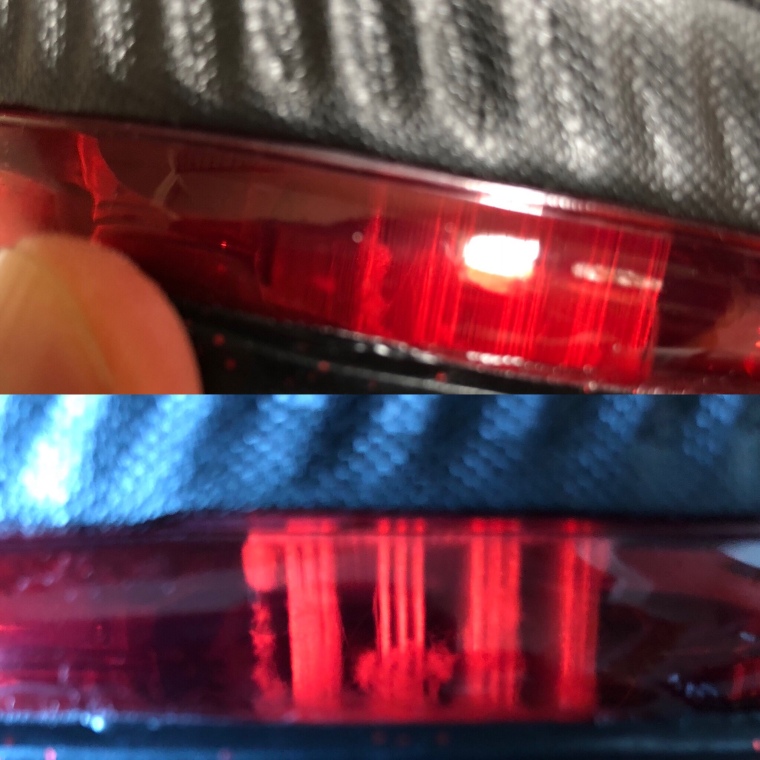 Maybe I’ve just been eating too much 🤷🏻♂️
Maybe I’ve just been eating too much 🤷🏻♂️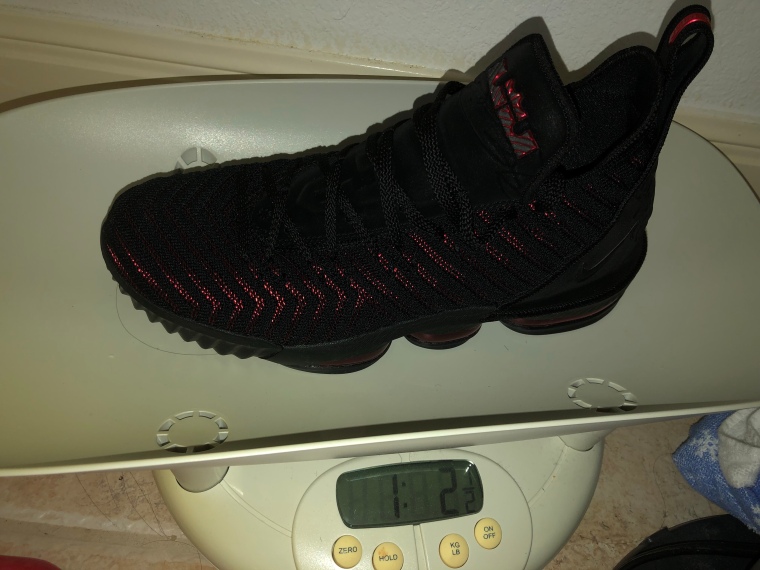 I could care less about the weight and at 18.5 ounces the XVI is a chunker even for a mid (this is not a low). Most mids weigh around 15 ounces while lows average about 13.5-14 ounces. Hit the gym kids if you can’t handle a few extra ounces.
I could care less about the weight and at 18.5 ounces the XVI is a chunker even for a mid (this is not a low). Most mids weigh around 15 ounces while lows average about 13.5-14 ounces. Hit the gym kids if you can’t handle a few extra ounces.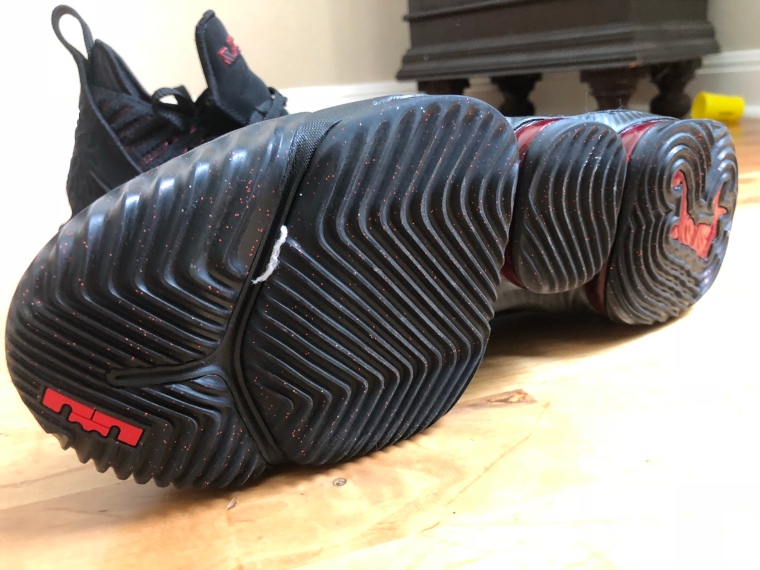 Easily the most improved area from the XV to the XVI. The XVI incorporates a pattern very very similar to the
Easily the most improved area from the XV to the XVI. The XVI incorporates a pattern very very similar to the  Think swolled up Soldier Xii blades.
Think swolled up Soldier Xii blades.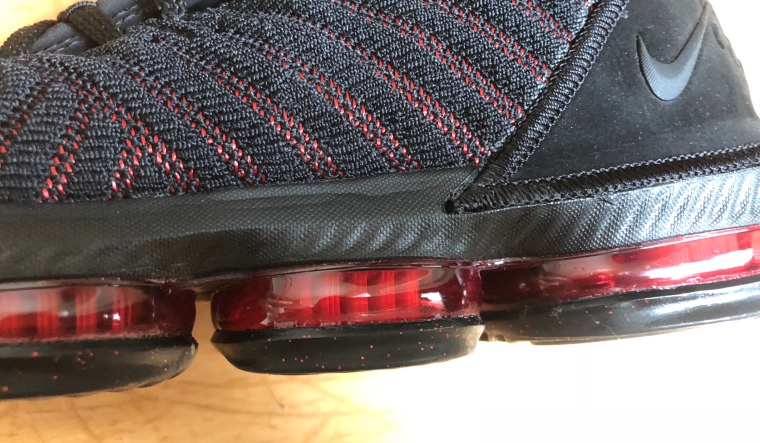 These started out a stiffer than the XV but broke in within a few hours to give a very similar albeit still a little stiffer ride to the XV. If you loved the cushioning on the XV you’ll love these.
These started out a stiffer than the XV but broke in within a few hours to give a very similar albeit still a little stiffer ride to the XV. If you loved the cushioning on the XV you’ll love these. These still sit around 25-26 mm on the forefoot (down from 28-29) and 30-31 in the heel (down from 34-36) which is a good 3-4mm lower than last years (10-15% ish) so if you like Kobe or Curry low to the ground these are not for you. I personally like them lower but it’s all preference and there is no right or wrong answer here. One of the best players I know who is an ultra shifty guard, Lifetime Fitness Ultimate Hoops MVP, semi pro MVP (who literally won the championship and MVP yesterday) and one man wrecking crew loves his XV’s so just comes to show you it ain’t the shoes.
These still sit around 25-26 mm on the forefoot (down from 28-29) and 30-31 in the heel (down from 34-36) which is a good 3-4mm lower than last years (10-15% ish) so if you like Kobe or Curry low to the ground these are not for you. I personally like them lower but it’s all preference and there is no right or wrong answer here. One of the best players I know who is an ultra shifty guard, Lifetime Fitness Ultimate Hoops MVP, semi pro MVP (who literally won the championship and MVP yesterday) and one man wrecking crew loves his XV’s so just comes to show you it ain’t the shoes.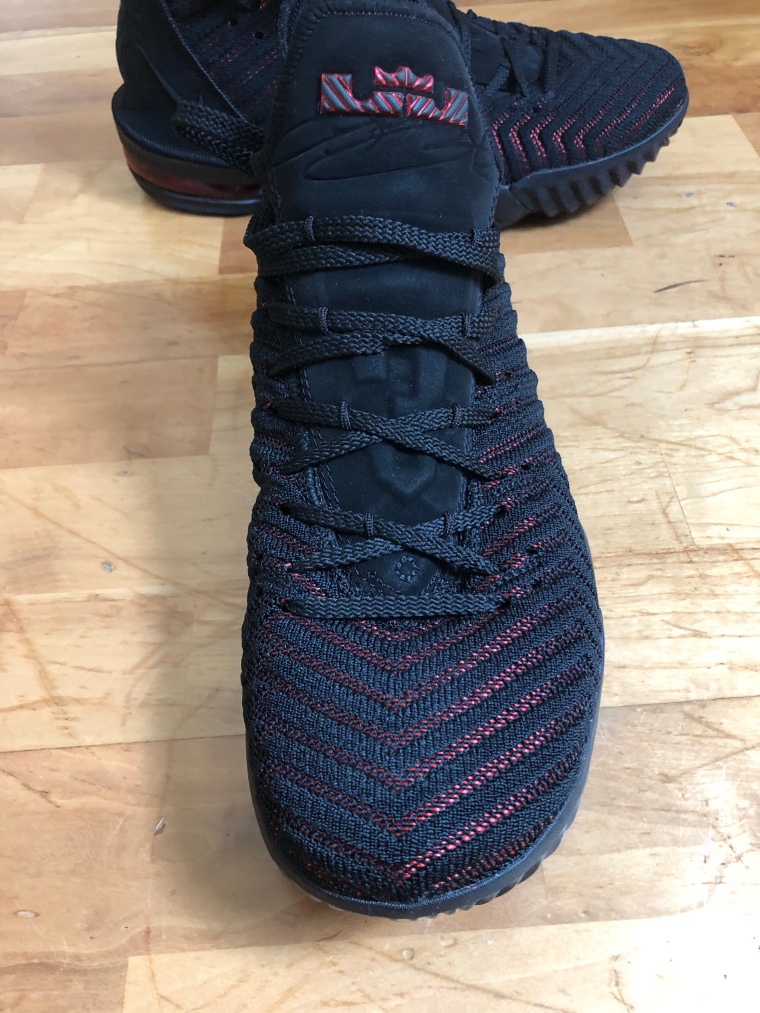 I went true to size with the XV and I went tts with the XVI as well (finger width at the toe). I tried on half a size down as well but I just preferred true to size. I’ve said it many times before but you can fit more than one size so experiment with each shoe if you can.
I went true to size with the XV and I went tts with the XVI as well (finger width at the toe). I tried on half a size down as well but I just preferred true to size. I’ve said it many times before but you can fit more than one size so experiment with each shoe if you can. Notice how the “tongue” pulls up for easier access. I’ve never had issues putting one piece shoes on but this should help those who do.
Notice how the “tongue” pulls up for easier access. I’ve never had issues putting one piece shoes on but this should help those who do.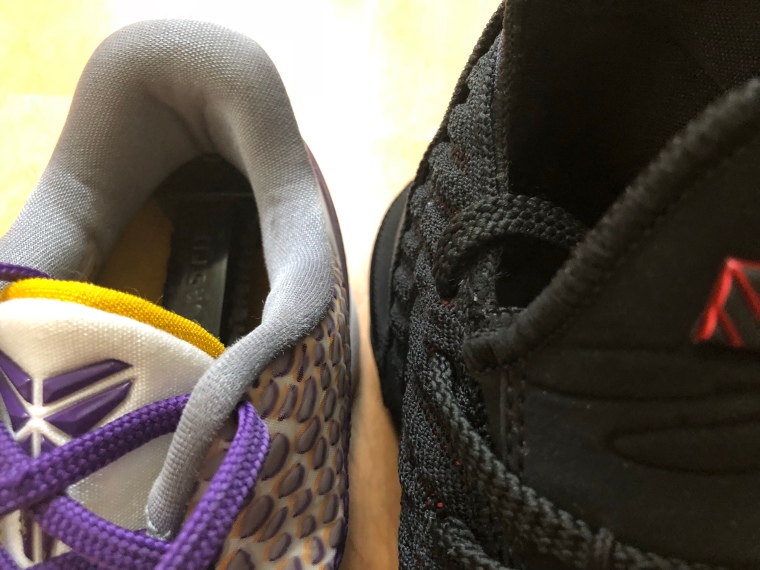 Here you can see how far back the eyelets are set up a standard Kobe VI
Here you can see how far back the eyelets are set up a standard Kobe VI This is how you accelerate break in time
This is how you accelerate break in time If you don’t like the feeling, go find a Kobe or another shoe but it just takes some time to get used to it.
If you don’t like the feeling, go find a Kobe or another shoe but it just takes some time to get used to it.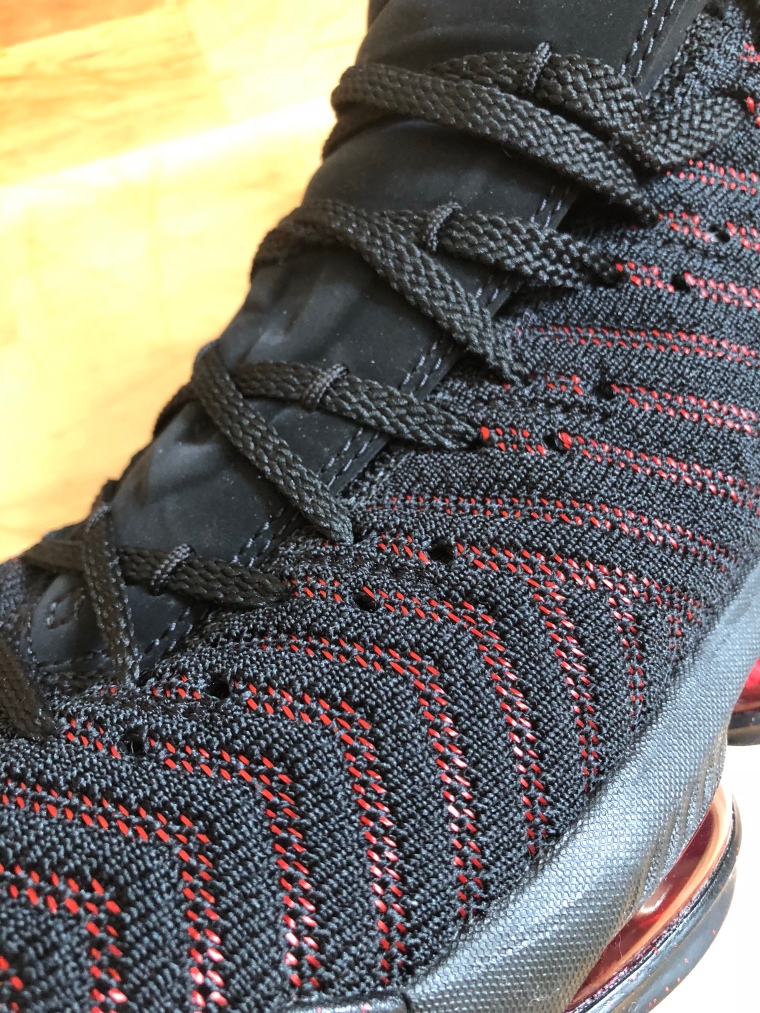 Battleknit Part Deux
Battleknit Part Deux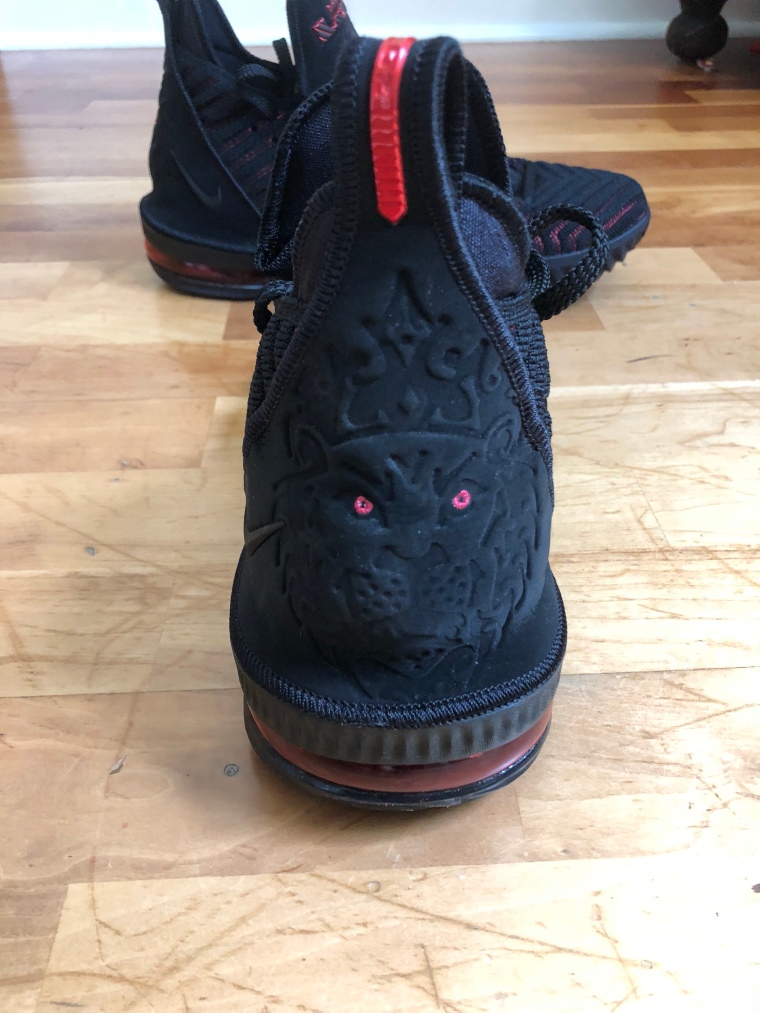
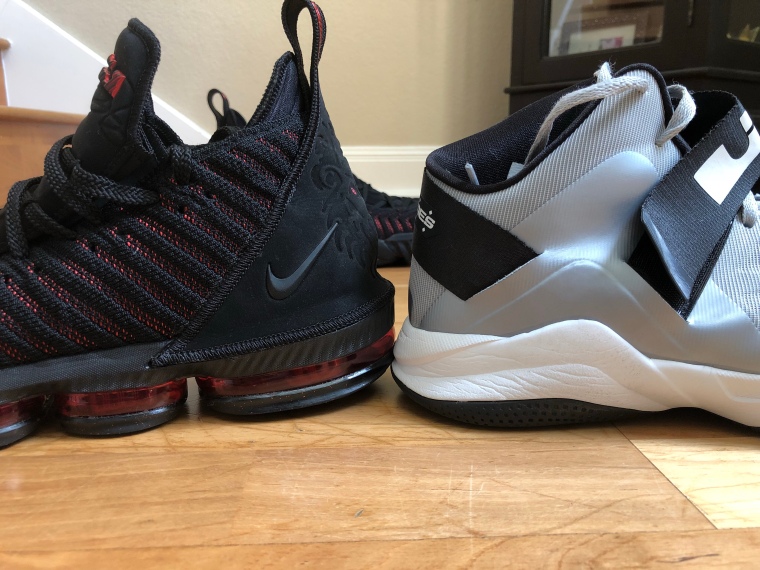 Regardless of nomenclature, support is minimal and comes from the heel counter and fit just like the XV.
Regardless of nomenclature, support is minimal and comes from the heel counter and fit just like the XV. I didn’t worry about tippiness at all because those little millimeters added a lot of extra stability. Thanks Nike, no consulting fee this time around.
I didn’t worry about tippiness at all because those little millimeters added a lot of extra stability. Thanks Nike, no consulting fee this time around.